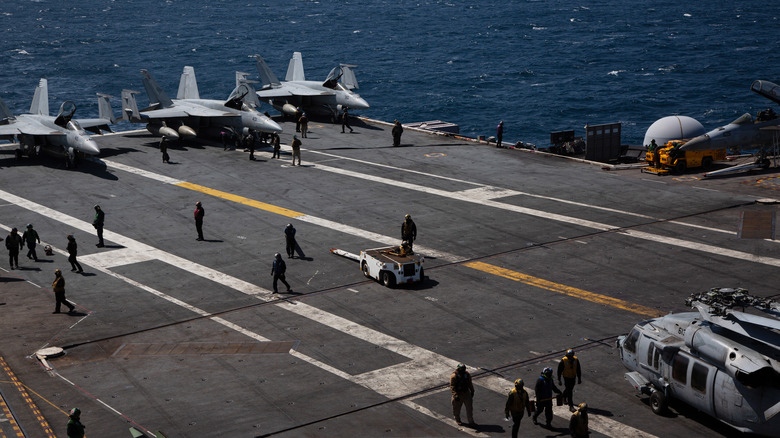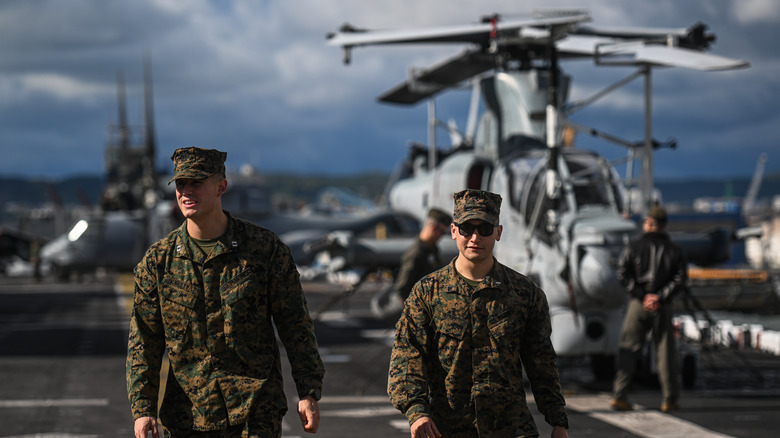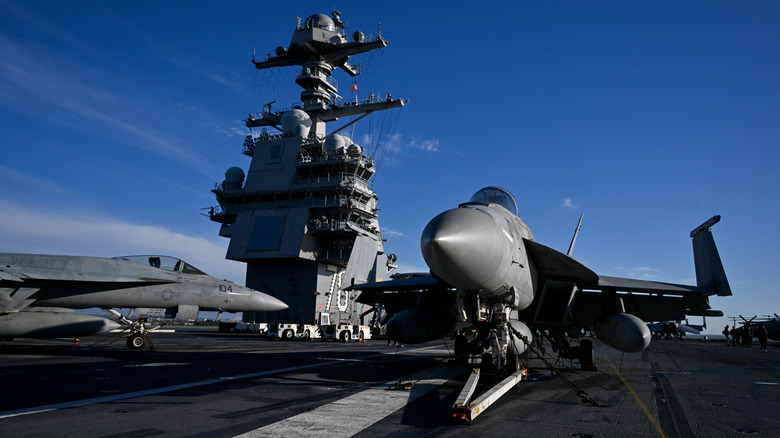Aircraft Carrier Vs. Amphibious Assault Ship: What's The Difference Between These Flat-Tops?
Aircraft carriers and amphibious assault ships have a similar appearance, but they perform different distinct missions. Each has a different design and carries varying equipment. Aircraft carriers are essentially mobile air bases primarily designed for air superiority. They carry and operate multiple types of fixed-wing aircraft, helicopters, and command and control (C2) platforms. Aircraft carriers have the ability to dominate airspace by using assets to perform long range air strikes, surveillance of enemy territory, and strategic support missions.
Amphibious assault ships perform sea-borne operations such as inserting troops (usually Marines) onto the shore for direct actions or humanitarian assignments. These operations use short range aircraft like helicopters, tiltrotor aircraft, and amphibious landing craft to get troops and equipment onto the shore. Once the troops are there, amphibious assault ships provide close air support for ground troops. A solid understanding of the different missions and capacities of these flat-topped ships provides a better appreciation of how they can enhance a nation's military.
Missions and equipment
Aircraft carriers are meant to provide air dominance. This is done by deploying long range aircraft with different mission sets than those on amphibious assault aircraft. These aircraft include fighter jets like the F/A-18E/F Super Hornet and F-35C Lightning II, the EA-18G Growler for electronic warfare, and the E-2D Advanced Hawkeye for surveillance and airborne command and control (C2). These platforms need certain equipment like catapults and arresting devices for successful launch and retrieval. Additionally, aircraft carriers have large maintenance areas to maintain a long-term air presence.
Amphibious assault ships are meant to be used with ground troops in amphibious combat. They do this by loading, moving, and landing members of Marine Expeditionary Units (MEUs) onto a hostile shore. This is done with different aircraft and landing craft than those on aircraft carriers, including a combination of helicopters, tilt-rotor aircraft, and landing craft such as the Landing Craft Air Cushion (LCAC) hovercraft and the Amphibious Assault Vehicle (AAV) armored personnel carrier. And in some instances, the purpose-built F-35B is used. These ships also have well decks, or big open ports at the back of the ship, that flood with water so that vessels can float into the sea and onto land.
Operational flexibility and strategic impact
Carriers allow nations to project the strength of their airpower, and can be thought of as independent floating airfields. This leaves countries free to react quickly to global conflicts. The wide range of aircraft onboard aircraft carriers puts them at the heart of naval task forces by delivering strikes, show of force missions, and airlifts to ground troops. The presence of an aircraft carrier can be a deterrent to any enemy when spotted just off the shore.
Amphibious assault ships primarily transport and insert ground forces — which can then be supported by aircraft carriers — and conduct various humanitarian operations. This special ability to send forces, vehicles, and supplies to the shore is useful in countries with minimal infrastructure. Plus, short range aircraft can provide medical evacuation (MEDEVAC) and supply missions. This versatility allows amphibious attack ships to be used in many types of operations outside of air supremacy.
Aircraft carriers and amphibious assault ships might look the same, but they play different roles, carry different aircraft, and utilize different design elements. Both ships are strategically important and help nations carry out critical missions necessary for defense.


